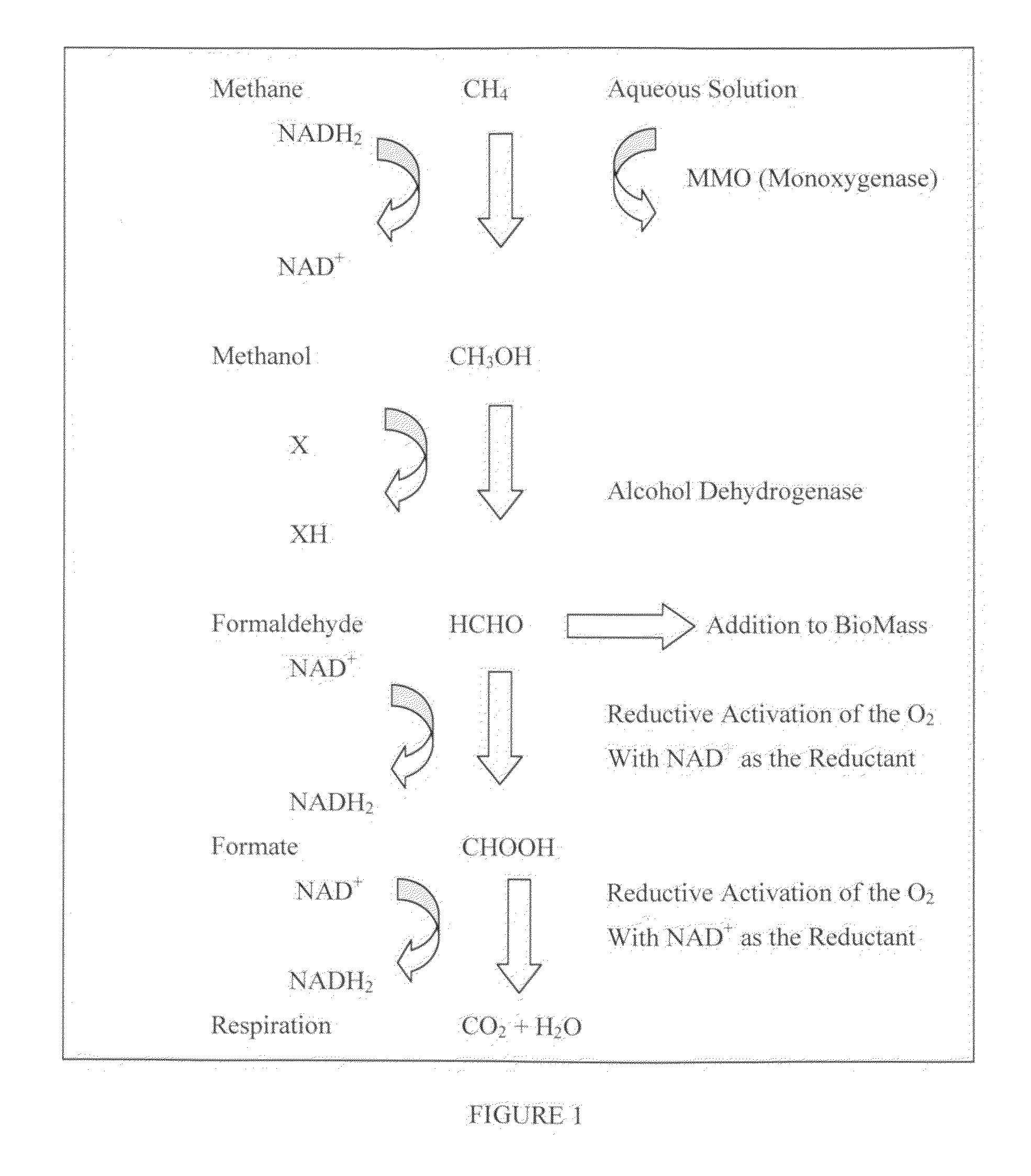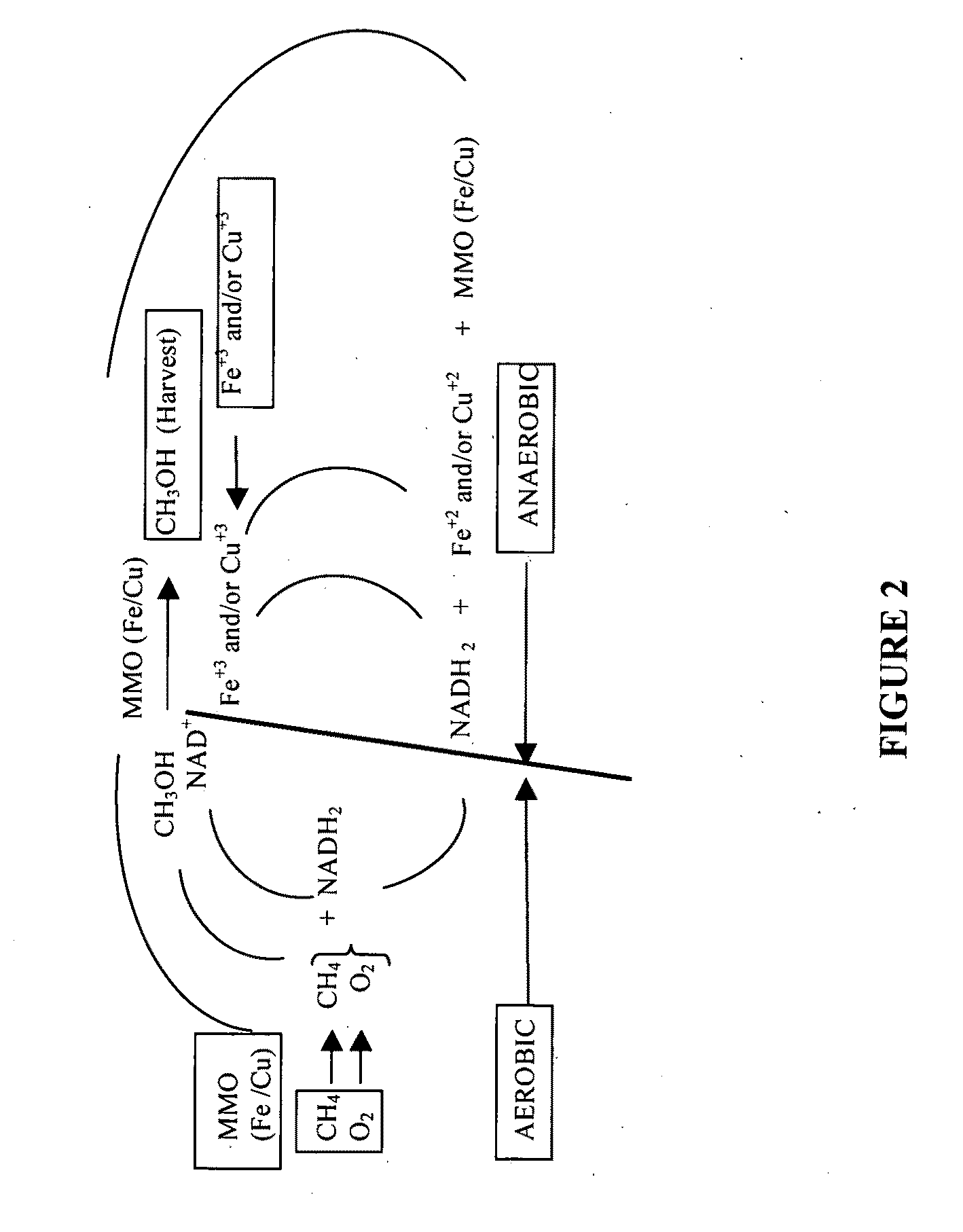Liquid methanol fuel production from methane gas at bio-normal temperatures and presure
a technology of methane gas and liquid methanol, which is applied in the direction of fermentation, etc., can solve the problems of difficult replacement of crude oil as a base of these products, requiring extensive maintenance and supervision, and posing ‘significant challenges regarding compatible materials and costs’
- Summary
- Abstract
- Description
- Claims
- Application Information
AI Technical Summary
Benefits of technology
Problems solved by technology
Method used
Image
Examples
Embodiment Construction
[0025]Methanotropic bacteria evolved an enzyme known as Monoxygenase (‘MMO’) that, depending on the type of bacteria, is either a dominant copper-containing or iron-containing organometallic complex. This MMO enzyme allows the methanotropic bacteria to oxidize methane as a carbon source at atmospheric pressure and in the lower temperature range of liquid water, 10° to 45° C. Eons of evolutionary selection hammered out a solution that hundreds of years of human scientific progress has not been able to duplicate; yet intelligent design, backed by insightful vision and careful research and carried out with comprehending supervision, now can turn these microorganisms' internal functionality to human benefit.
[0026]The present invention is a two-stage process that—by controlling and interrupting at the right points—uses these methanotropic bacteria's enymzatic processes. By controlling atmospheric composition—all without requiring extremes of either high or low pressure, or high or low te...
PUM
| Property | Measurement | Unit |
|---|---|---|
| operating temperature | aaaaa | aaaaa |
| oxidation reduction potential monitor | aaaaa | aaaaa |
| oxidation reduction potential monitor | aaaaa | aaaaa |
Abstract
Description
Claims
Application Information
 Login to View More
Login to View More - R&D
- Intellectual Property
- Life Sciences
- Materials
- Tech Scout
- Unparalleled Data Quality
- Higher Quality Content
- 60% Fewer Hallucinations
Browse by: Latest US Patents, China's latest patents, Technical Efficacy Thesaurus, Application Domain, Technology Topic, Popular Technical Reports.
© 2025 PatSnap. All rights reserved.Legal|Privacy policy|Modern Slavery Act Transparency Statement|Sitemap|About US| Contact US: help@patsnap.com



